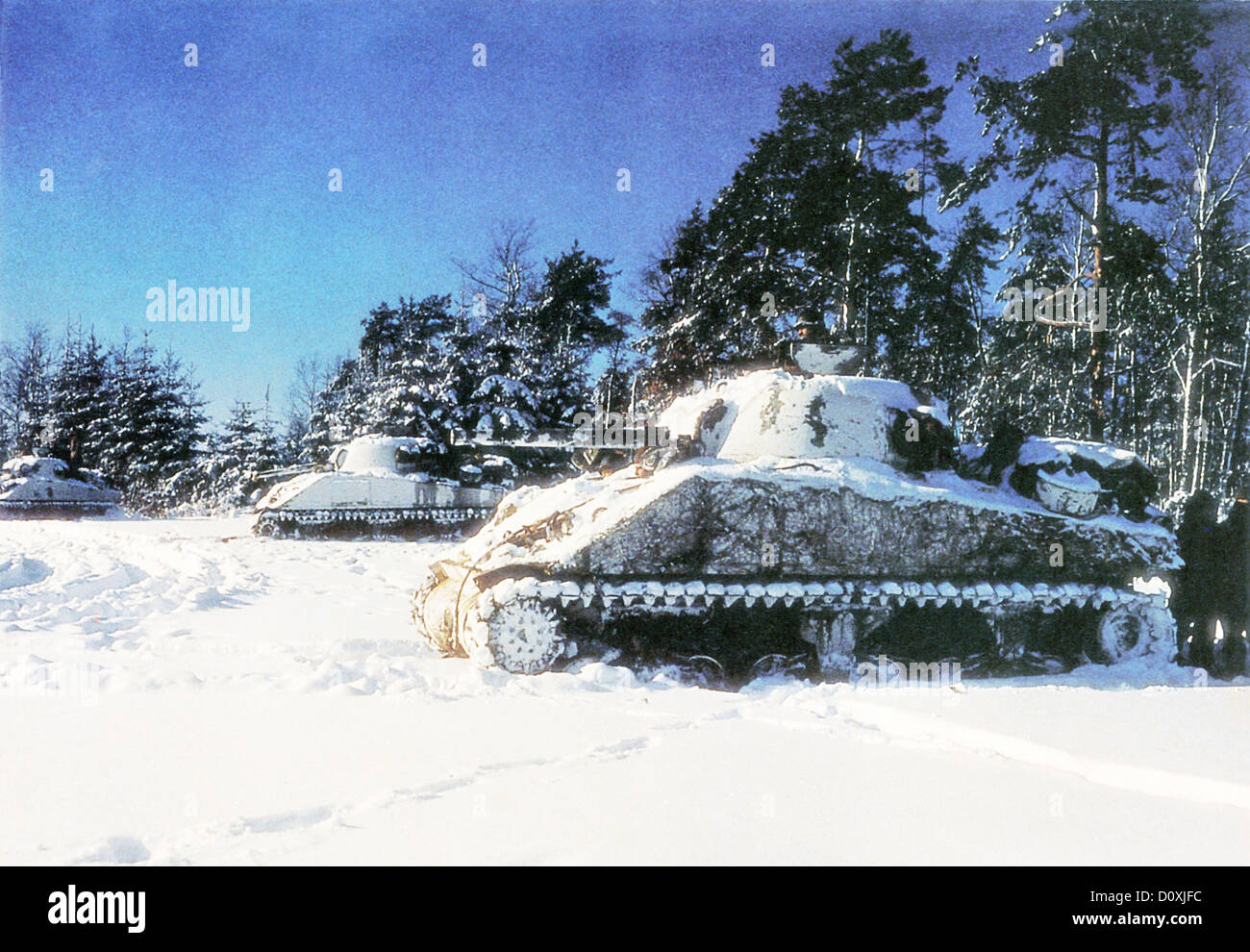


Engineers were brought into the Eifel, but their very efforts delayed the German truck columns so urgently needed farther west. By the time power snowplows reached the Eifel the American fighter-bombers were strafing and bombing every large vehicle that moved. Horse-drawn snowplows were few and ineffective, hastily erected snow fences were torn down by troops scrounging for firewood, there was no gravel available, and a large number of the engineer construction battalions had been taken west for employment as infantry. Snow began to drift in the Eifel hills, bringing traffic on the main supply roads west of the Rhine almost to a standstill. The dramatic change of the 23d, brought by cold, dry winds from the east, stripped the German armies of their immunity to air attack.

In the north the Sixth Panzer Army was bogged by rain and mud, in the south the Fifth Panzer Army was hampered in its swing around Bastogne by fog and snow, and along the German supply roads back over the Eifel snow fell continuously. By the 22d competing weather systems from Russia and the Atlantic had brought on a hodgepodge of snow, blizzards, fog, and rain. On the 20th and 21st the higher ground began to freeze in patches, leaving stretches of the Ardennes roads slippery and muddy. A thaw set in which slowed his tanks and the erstwhile heavy ground fog began to show sudden openings, such as those which exposed the German tanks and infantry during the fight at Noville. The high pressure system which came in from the Atlantic on 18 December, however, worked momentarily against the attacker. This type of weather had a useful side effect during the rupture of the American lines since it veiled the attacker with fog and mist, a very important feature of the initial German successes just as it had been in the great offensives of 1918. The German selection of a target date for the commencement of the Ardennes offensive turned on the prediction of poor flying weather. There is an axiom that weather on the battlefield is divided equally between the combatants-but its impact on military operations is not equal in amount or direction. Chapter 25-THE ARDENNES: BATTLE OF THE BULGE


 0 kommentar(er)
0 kommentar(er)
